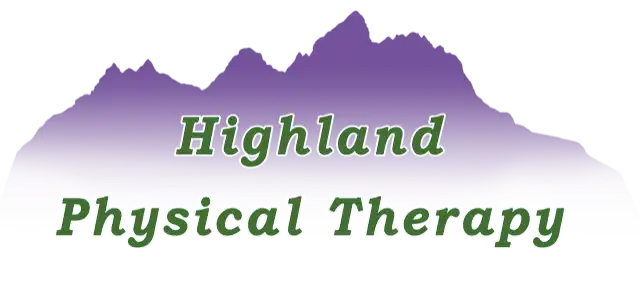Living with long-term discomfort can quietly change every part of your life.
It’s not just about the physical sensations — it’s the way it lingers in the background of daily routines. The constant reminder when bending, sitting, or even sleeping. The emotional toll of having to explain, again, why you can’t do the things you once loved.
For many people, the hardest part isn’t the discomfort itself, but the feeling of being stuck — trapped in a cycle where every solution seems temporary. You stretch, you rest, you try to stay active, yet that familiar ache always finds its way back. Over time, it can lead to frustration, fatigue, and even fear of movement.
But what if the body’s own protective systems — the same ones designed to keep you safe — were part of the reason the discomfort keeps returning?
That’s where Fascial Counterstrain (FCS) offers a fresh perspective: a gentle, hands-on approach that helps the body unwind tension and restore natural movement, without the force or pressure many people expect from traditional therapy.
Understanding the Cycle of Long-Term Discomfort
Discomfort is often the body’s way of signaling that something needs attention. When an injury, strain, or prolonged stress occurs, muscles and fascia — the web-like tissue that connects every part of the body — can tighten to protect the area.
At first, this protective reaction is useful. It prevents further strain and gives the body time to heal. But if the tension doesn’t release properly, that same protective response can become overactive, keeping muscles and tissues “on alert” long after the initial issue has passed.
The result?
- Persistent stiffness or tightness that never fully goes away
- Fatigue from constant muscular tension
- A feeling that movement is limited or “restricted”
- Emotional weariness from living with discomfort every day
Over time, this pattern can spread beyond the original area. You might notice tension traveling to your back, shoulders, or hips — as if your body is carrying the weight of its own protective reflexes.
Traditional stretching or exercise can help, but when fascia itself is involved, the problem runs deeper than the surface muscles. That’s where Fascial Counterstrain comes in — addressing not just the symptom, but the underlying reflex that keeps the body locked in protection mode.
What Makes Fascial Counterstrain Different
Fascial Counterstrain is a gentle manual therapy technique that focuses on releasing the body’s natural tension patterns. It’s based on the understanding that every part of the body — muscles, nerves, blood vessels, organs, and even the fascia — can develop areas of tension or “protective spasm.”
Instead of forcing movement or stretching tight muscles, Fascial Counterstrain works with the body’s own reflexes to calm the nervous system and guide tissues back to a state of ease.
Here’s how it typically works:
- Finding the source
The therapist uses gentle touch to identify areas of tension or sensitivity — often far away from where you feel the discomfort. These areas may hold the key to how the body is reacting as a whole. - Positioning for release
Once a tender area is found, the body is gently positioned in a way that reduces tension and “unloads” the strain. There’s no forcing, no stretching — just positioning the body in a way that tells the nervous system it’s safe to relax. - Letting the body unwind
The position is held for a short time — often less than two minutes — while the therapist maintains gentle contact. Many people describe feeling warmth, lightness, or a sense that the body is quietly letting go. - Reassessment and restoration
After the release, the body is brought back to a neutral position and reassessed. Often, movement feels freer and the area less guarded.
This entire process is deeply respectful of the body’s natural rhythms. It doesn’t force change; it allows it.
A Gentle Approach for a Tired Body
When you’ve lived with discomfort for months or even years, your body becomes cautious. Every movement feels like a negotiation. You might hesitate to lift, twist, or bend, not because you can’t, but because you’ve learned that doing so might bring that familiar feeling later.
That’s why a gentle approach matters.
Many people are surprised when they experience Fascial Counterstrain for the first time. There’s no deep pressure, cracking, or aggressive stretching. Instead, the therapist uses subtle movements and precise positioning that allow the body to reset its own protective responses.
This makes it suitable for people who:
- Have chronic or long-standing tension
- Feel sensitive to firm pressure or manipulation
- Struggle with fatigue, stress, or systemic tightness
- Want a natural, non-invasive way to support recovery
It’s also a technique that can be integrated with other therapeutic approaches. Whether used on its own or alongside physical therapy, exercise, or wellness care, Fascial Counterstrain supports the broader goal of restoring comfort and confidence in movement.
How Fascia Influences Discomfort
To understand why Fascial Counterstrain can be so effective, it helps to know a bit about fascia itself.
Fascia is the body’s connective tissue — a continuous web that surrounds and supports every organ, muscle, nerve, and blood vessel. When healthy, it’s flexible and fluid, allowing the body to move freely. But when fascia becomes tight, sticky, or restricted, it can pull on surrounding structures, creating a ripple effect of discomfort.
Imagine wearing a shirt that’s been twisted at the hem. No matter how you move, you feel the tug in unexpected places. That’s what restricted fascia can do inside the body.
By using gentle positioning and light pressure, Fascial Counterstrain helps restore the natural movement of this connective tissue. It’s like unwrinkling that twisted shirt — easing tension across the entire system.
The Emotional Side of Long-Term Discomfort
There’s an emotional story behind every long-term discomfort experience. The frustration of being told “everything looks normal.” The disappointment when a new treatment offers hope, only for the tightness to return. The slow erosion of confidence in your own body.
Many people describe feeling invisible — like their discomfort doesn’t have a place in the conversation unless it fits neatly into a medical category.
Fascial Counterstrain offers something many people haven’t felt in a long time: a sense of being listened to, both by the therapist and by their own body. The process is quiet, patient, and deeply attuned. It creates a safe space for the nervous system to settle — something that’s often missing in fast-paced, symptom-focused care.
Over time, that sense of calm can extend beyond the session. Many clients report that they feel lighter, more aware of their posture, or more connected to their movement patterns.
Gentle Change That Lasts
The beauty of Fascial Counterstrain lies in its subtlety. It doesn’t chase discomfort — it listens to it.
By addressing the root of tension rather than only its surface expression, the changes can last longer and feel more natural. Instead of pushing through resistance, FCS teaches the body to trust movement again.
Because fascia is connected throughout the body, even small releases can have widespread effects. For instance, tightness in the neck may ease after work on the upper back or jaw. Hip stiffness may improve after addressing fascial restrictions in the abdomen. Each part of the body communicates with the rest — and Fascial Counterstrain helps restore that conversation.
What to Expect Over Time
For someone dealing with long-term discomfort, the journey toward relief is rarely a straight line. The process of letting go — physically and emotionally — takes time.
Most people start noticing changes after the first few sessions. Sometimes it’s immediate ease; other times, it’s more gradual — improved sleep, less fatigue, or fewer “bad days.”
The key is consistency and patience. Each session builds on the last, gently guiding the body out of protection and back into natural alignment.
It’s also important to combine Fascial Counterstrain with other healthy habits:
- Staying hydrated to support fascial mobility
- Practicing gentle stretching or movement
- Managing stress, which can tighten fascia just as much as physical strain
- Getting enough rest to allow recovery to continue
Together, these small steps can create lasting change.
A Story of Hope
One of the most inspiring parts of Fascial Counterstrain therapy is witnessing people rediscover what their bodies are capable of.
Take, for example, someone who once avoided long walks because of persistent tightness. After a series of gentle sessions, they begin to move more freely — not because someone “fixed” them, but because their body remembered how to move without guarding.
Or the individual who hasn’t slept through the night in years because of discomfort. Over time, they begin to rest more deeply, waking up without that familiar ache.
These aren’t miracle stories — they’re moments of reconnection. They’re the body’s quiet way of saying, “I’m ready to let go now.”
Empowerment Through Understanding
Perhaps the most powerful aspect of Fascial Counterstrain is how it reframes the experience of long-term discomfort. Instead of viewing the body as something broken that needs to be fixed, it recognizes the body as intelligent and adaptive.
Discomfort, in this view, is not an enemy but a message. It’s a signal that the body has been protecting itself — sometimes for too long — and that it’s ready for gentle guidance back to balance.
When people begin to understand this, something shifts. Fear gives way to curiosity. Movement becomes exploration instead of avoidance. Healing becomes a partnership rather than a prescription.
Taking the First Step Toward Ease
If you’ve been living with long-term discomfort, it’s easy to feel like you’ve tried everything. But sometimes, the most effective change comes not from doing more — but from doing less.
Fascial Counterstrain invites you to slow down, to listen, and to let your body unwind at its own pace. It’s a reminder that recovery doesn’t always have to be forceful. Sometimes, it starts with a breath, a soft touch, and the willingness to trust your body again.
The journey toward comfort isn’t about “fixing” what’s wrong — it’s about reconnecting with what’s right.
So if you’re ready to explore a gentler path toward movement, ease, and confidence, consider learning more about Fascial Counterstrain. It may be the key to helping your body rediscover the comfort it’s been longing for.
Final Thoughts
Long-term discomfort can make life feel smaller — fewer activities, fewer moments of ease, fewer days where you wake up without that first twinge. But with the right approach, it’s possible to expand again — to move, breathe, and live with more comfort.
Fascial Counterstrain isn’t about quick fixes or dramatic interventions. It’s about quiet, consistent change — one layer at a time.
And sometimes, that’s exactly what the body needs most.
If you’d like to experience how Fascial Counterstrain can support your journey toward a freer, more comfortable life, reach out today to book a complimentary Discovery Visit.
Let’s take the first step together — gently, naturally, and with confidence that your body can find its way back to ease.
📍 Visit us at 1951 Bench Road Suite E, Pocatello, ID
📞 Call: (208) 237-2080
Your best years are still ahead—let’s make them active and strong.
More Free Resources:
Enjoy Gardening While Protecting Your Back – Highland Physical Therapy
Upper Back Pain Relief at Home: Simple Exercises for Quick Comfort – Highland Physical Therapy
Find Relief With Our Lower Back Pain Self Care Tips – Highland Physical Therapy


